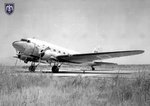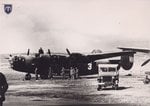- Thread starter
- #81
Vultee-V series planes was designed and produced by the US firm Vultee Aircraft Development Corporation as a tactical bomber and assault plane. Its design was based on the transport version V-1 with the inspirations given by Capt. Enver Akova. The plane also called A-19 by the USAAC were not deployed at large quantities but they were exported to China and Brazil in addition to Turkey.
40 of the Vultee V-11-GBT model (T stands for Turkey) were procured as replacements for the Breguet XIXs. Three of the planes arrived in 1937 and the remainder in 1938. They were deployed at the 27th, 28th, 44th 48th Co.s of the 2nd Regiment. In 1944 they were transferred to the 101st 103rd Recce Co.s. In between 1947 48 they served for a while at the 1st 2nd Co.s of the 9th Regiment. They were retired in 1948 after the arrival of the P-47s.
40 of the Vultee V-11-GBT model (T stands for Turkey) were procured as replacements for the Breguet XIXs. Three of the planes arrived in 1937 and the remainder in 1938. They were deployed at the 27th, 28th, 44th 48th Co.s of the 2nd Regiment. In 1944 they were transferred to the 101st 103rd Recce Co.s. In between 1947 48 they served for a while at the 1st 2nd Co.s of the 9th Regiment. They were retired in 1948 after the arrival of the P-47s.






















